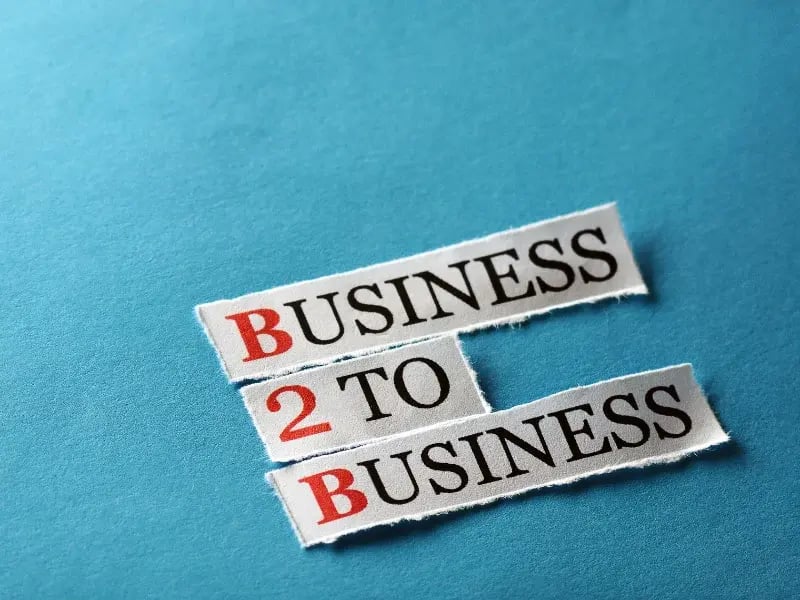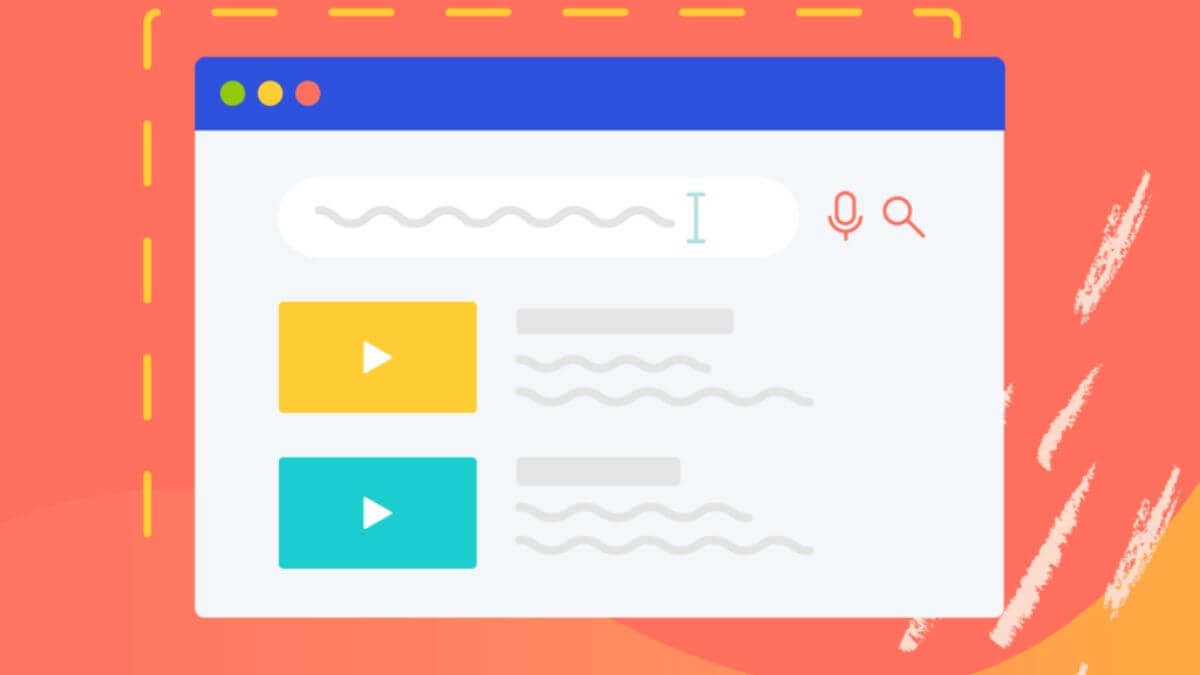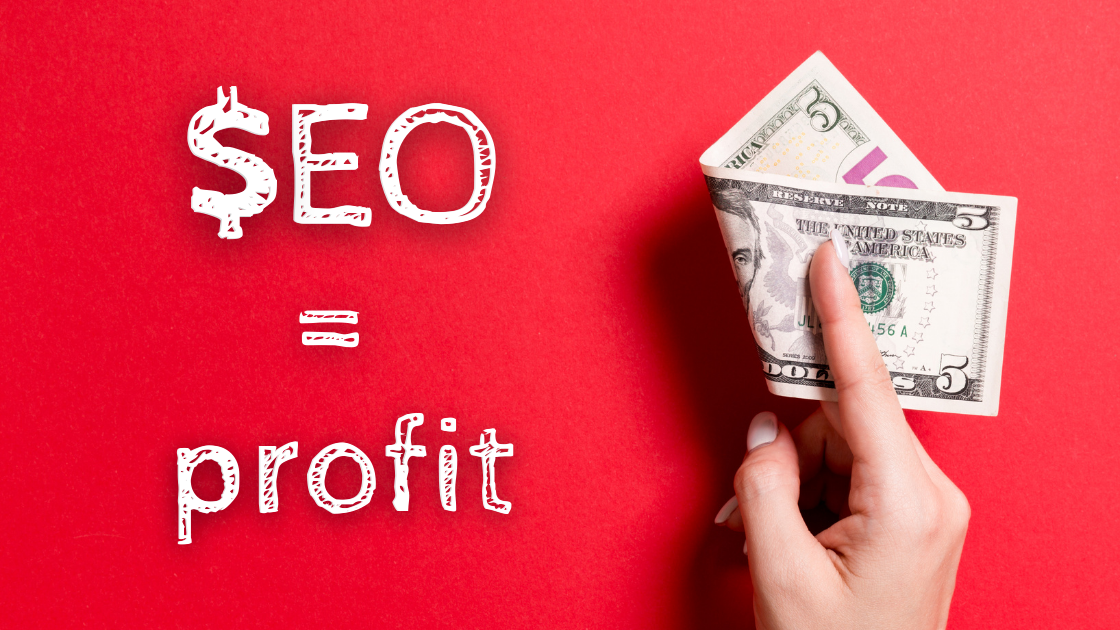Video marketing campaign is simply the art ...

11 Essential B2B Marketing Strategies to Succeed in 2025
2 May 2025
Table of contents
B2B marketing is facing specific challenges in 2025. Technological advancements, economic shifts, and evolving expectations from professional buyers are forcing companies to refine their marketing strategies.
In this article, we present 11 effective B2B marketing strategies for 2025, along with key trends. We'll cover AI, Account-Based Marketing (ABM), new technologies, and ways to create content that helps you stand out in a competitive market.
[TL;DR] Summary of the 11 B2B Marketing Strategies for 2025
Don’t feel like reading the whole thing? Here’s the TL;DR:
- Understand the new B2B challenges: buyers use more channels and take longer to decide.
- Use AI for personalization and behavior prediction.
- Align marketing and sales: share tools, use lead scoring, sync data.
- Create high-value content: guides, case studies, podcasts.
- Optimize for both SEO and GEO (Generative Engine Optimization): position on Google and generative AIs like ChatGPT.
- Leverage video: explain, reassure, and engage at every stage.
- Invest in influencer marketing: collaborate with experts and build thought leadership.
- Be on the right platforms: LinkedIn, YouTube, Slack, depending on your audience.
- Master email marketing and lead nurturing with segmented, data-driven sequences.
- Deploy ABM: target a small number of high-value accounts with custom strategies.
- Use analytics to optimize campaigns and drive revenue.
1. B2B Marketing in 2025: New Challenges
According to McKinsey's 2024 B2B Pulse Survey, professional buyer behavior has changed dramatically. Buyers now use around 10 different channels to gather information before a purchase—compared to only 5 in 2016. Nearly two-thirds of this research happens online before speaking to a salesperson.
2. Technologies Transforming B2B Marketing
2.1. AI for Personalized Experiences
AI helps you analyze customer data to deliver tailored experiences—like having a consultant who knows each client intimately.
It also predicts which leads are most likely to convert based on behavior on your website. McKinsey reports that companies using AI effectively in their marketing strategy are 1.7x more likely to increase market share.
2.2. Marketing Automation to Drive Conversions
Marketing automation maintains contact with leads during long B2B sales cycles without manual effort.
Example: If a company downloads a guide from your site, automation can send a follow-up email sequence and alert the sales team when the lead is ready to move forward.
Benefits:
- Maintain long-term relationships
- Share useful info tailored to the buyer journey
- Notify sales at the right time
3. Marketing and Sales Alignment
Often, marketing brings in leads and sales closes deals—but if the two teams aren’t aligned, results suffer. Sales complain of low-quality leads, while marketing wonders why good prospects don't convert. Alignment is essential.
3.1. Lead Scoring to Qualify Prospects
Lead scoring ranks contacts based on their interest in your offerings.
- Marie, a marketing manager at TechSolutions, assigns 10 points for downloading a guide, 5 for opening an email, and 20 for requesting a demo.
- Sales rep Pierre only contacts leads scoring above 50.
3.2. Unified Tools and Shared Data
If marketing and sales use different systems, data gets lost or distorted. CRMs like HubSpot unify everything:
- Marketing sees which content prospects engage with
- Sales gets full context before calls
- Both teams work with up-to-date info
If you're looking to set up HubSpot to align your marketing and sales teams, our certified agency can support you with implementation and team training.
4. B2B Content Marketing
It’s not about producing more content—it’s about producing better content that answers real business challenges.
4.1. High-Value Content Creation
Useful content answers precise questions. For example:
- Cybersecurity firm: "How to detect phishing in your company"
- Logistics company: "How to reduce delivery times without raising costs"
Best formats:
- Practical guides
- Case studies
- Comparisons of different solutions
4.2. B2B Podcasts: A Growing Trend
Podcasts are on the rise in B2B. They allow professionals to listen while commuting or multitasking and create a personal connection via voice.
You don’t need fancy equipment—just a good mic and relevant topics. A consulting firm, for example, could host a podcast on best practices in their industry.
5. SEO / GEO B2B stratégique
Having a clear website is crucial—but it’s useless if no one finds it.
SEO ensures visibility on Google. But in 2025, users are increasingly turning to generative AIs like ChatGPT and Perplexity, which summarize content rather than list links.
That’s where GEO comes in. GEO = Generative Engine Optimization. To appear in AI-generated answers:
- Structure content clearly
- Get to the point
- Use the same words your audience uses
- Optimize for both search engines and AIs with clear headers, simple phrasing, and well-organized info
6. B2B Video Marketing
Indeed, search engines favor publications that demonstrate your expertise. Video production reinforces your E.E.A.T. (Experience, Expertise, Authority, Reliability). By showing who you are, how you work and the results you've achieved, you gain credibility.
6.1. Formats vidéos : webinars et études de cas
- Webinars : Live knowledge-sharing builds authority
- Video case studies : Show how clients solved real problems with your help
6.2. Integration into the Buyer Journey
- Top of funnel : Explain a topic or service simply
- Middle : Provide proof (project breakdowns, testimonials)
- Bottom : Address objections with demos or FAQ videos
Videos increase time spent on site, improve engagement, and enhance visibility.
7. B2B Influencer Marketing
Influencer marketing isn’t just for fashion or B2C. In B2B, trusted expert endorsements can be game-changers.
7.1. Collaborations Build Trust
Partner with industry experts—not for popularity, but credibility. Example: If you sell HR software, co-host a webinar with a well-known talent consultant.
7.2. Thought Leadership from Within
Your company can become a trusted voice. How?
- Create content answering real client questions
- Publish experience-based articles and videos
- Join B2B podcasts and webinars
Thought leadership improves visibility on search engines, generative AIs, and social platforms.
8. B2B Social Media Strategy
8.1. LinkedIn for Qualified Leads
It’s where your clients go to find solutions, follow trends, and engage with serious companies. Best practices:
- Share insightful content
- Engage with your network
- Highlight your brand values
8.2. Platforms Aligned With Your Audience
- YouTube : For video-heavy strategies
- X : For tech, SaaS, finance
- Slack, Discord, forums spécialisés : Targeted niche communities (dark social)
Don’t be everywhere—just where it counts.
9. Email Marketing and Nurturing
Email remains a direct channel in B2B. Nurturing is about maintaining meaningful connections over time.
9.1. Segmented Email Sequences
Don’t send the same message to everyone. Adapt based on where the prospect is in their journey:
- Early stage : Share educational content
- Interest confirmed : Send service-specific details
9.2. Personalization Using Data
Make emails relevant by leveraging behavioral data:
- What did they view?
- What did they download?
- What actions did they take?
Use that data to:
- Write better subject lines
- Tailor content to real needs
- Time messages strategically
10. Account-Based Marketing (ABM)
ABM focuses on your most valuable accounts. Unlike nurturing (which targets all leads), ABM zooms in on a shortlist and coordinates actions across multiple channels.
How it works :
- Identify key accounts (e.g., 20 companies with perfect fit)
- Understand their unique needs
- Deploy personalized campaigns:
- Custom emails
- Targeted LinkedIn messages
- Private webinars on relevant issues
- Sector-specific content
11. Data and Analytics
Running campaigns without data is like flying blind. Analytics let you:
- Measure real impact
- Understand buyer behavior
- Adjust campaigns quickly
Key KPIs include:
- Number of leads
- Sales cycle duration
- Email open rates
- Social engagement
- Conversion to sales
Tools like Google Analytics 4 and HubSpot simplify tracking and show how marketing drives sales. A clear dashboard helps optimize for better outcomes.
B2B marketing in 2025 is about combining technology, relevance, and human connection. By embracing these strategies, you’ll be better equipped to generate leads, earn trust, and drive long-term growth.
Implement your strategies
All these tactics only have an impact if they are well ordered and followed up over time. That's what our B2B marketing department is all about: structuring actions, activating the right channels and maintaining a clear link between marketing and sales.






